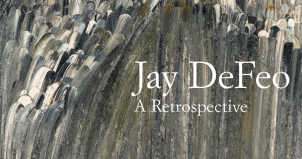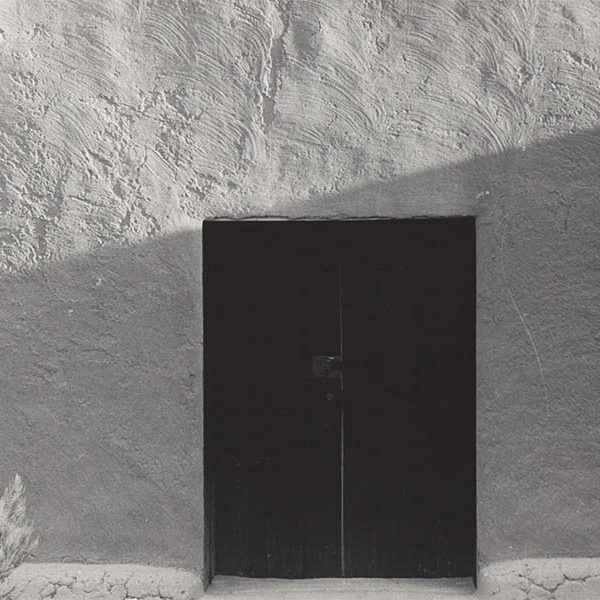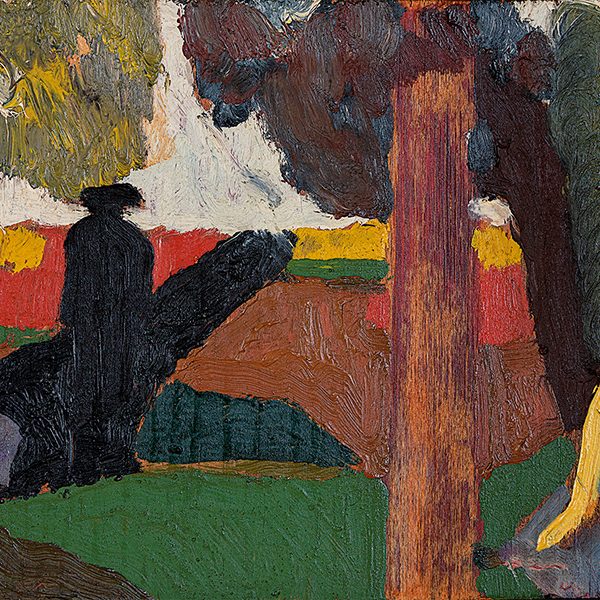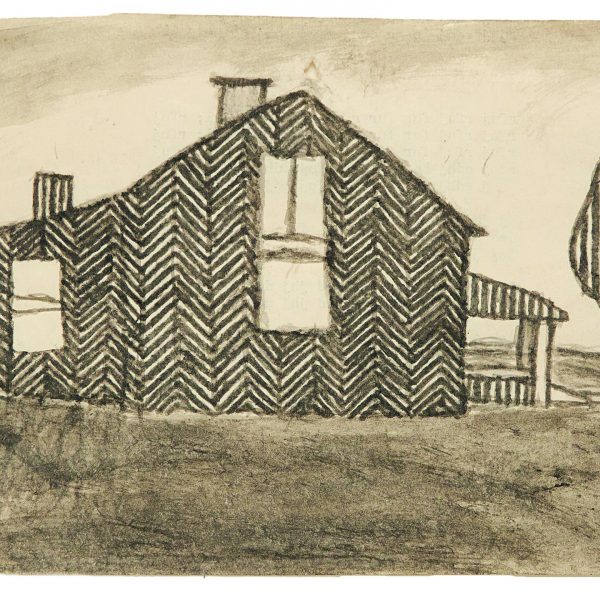Notes from the Field: Jay DeFeo: A Retrospective
Monumental is a word often applied to descriptions of Jay DeFeo’s The Rose. With an estimated weight of 2,000-3,000 pounds, “monumental” is hardly a misnomer. However what might strike visitors to the Whitney Museum’s recently opened DeFeo retrospective is not simply the heft of the piece but its surprising serenity. Installed at the end of a long display space that is reminiscent of a nave, The Rose sits receded against a black wall, an extreme departure from the white of the other galleries. Light strikes from both sides of the canvas, illuminating the behemoth in a manner meant to replicate the sunlight that would stream in through the bay windows of DeFeo’s San Francisco apartment. There’s no arguing that The Rose has achieved an exalted, almost divine status, both in display and in the mythology that has built up around the artist since her death in 1988. One wonders if this is not because the piece bears an inherent sadness, just as DeFeo’s life bore an inherent sadness, laced with substance abuse, financial instability, and illness, including a gum disease that resulted in tooth loss and the dental bridge that appears in the grotesque and wonderful After Image (1970) and Crescent Bridge I and Crescent Bridge II (both 1970-1972).
In 1965, after working diligently, almost myopically, on The Rose for seven years a rent hike forced DeFeo and her husband Wally Hedrick out of their Fillmore Street studio (a section of an exterior wall was demolished so that the painting could be lowered by forklift). Shortly thereafter she had to begin wearing a dental bridge to compensate for lost teeth. Her marriage fell apart. She lost the representation of her New York gallery and largely stopped producing work, save for constructing beer can sculptures in the front yard of her new home in rural Marin County. The Rose has its own unwieldy, almost cursed mythology. The painting would suffer over 20 years of neglect behind a false wall at the San Francisco Art Institute before being removed and restored in 1995 for the Whitney’s exhibition Beat Culture and the New America: 1950–1965. It’s not difficult, when considering this last fact, to align the mythologies of art and artist.
 In the early 1970s Jay DeFeo rebounded. She began teaching at the San Francisco Art Institute, later moving to a tenured position at Mills. She started producing small sculptural works and ventured into photography and Surrealist collage. She also began painting again, this time using synthetic paint. She learned to swim and produced elegant charcoal renderings of her goggles. She travelled to Africa and Japan. The plentiful small catastrophies that peppered the artist’s earlier life make these later triumphs all the more resonant and the subsequent works all the more emotionally engaging. There is a great sense of tangibility to DeFeo’s work, a sense that goes beyond The Rose and its almost repulsive accumulation of paint. The exhibition communicates not just a history of the artist and the many permutations of her materials and medium, but the narrative of Jay DeFeo as it is revealed in objects. Given the almost ecclesiastical staging and lighting of The Rose, one can’t help but feel that DeFeo is the patron saint of second chances and this exhibition is the staging of her relics.
In the early 1970s Jay DeFeo rebounded. She began teaching at the San Francisco Art Institute, later moving to a tenured position at Mills. She started producing small sculptural works and ventured into photography and Surrealist collage. She also began painting again, this time using synthetic paint. She learned to swim and produced elegant charcoal renderings of her goggles. She travelled to Africa and Japan. The plentiful small catastrophies that peppered the artist’s earlier life make these later triumphs all the more resonant and the subsequent works all the more emotionally engaging. There is a great sense of tangibility to DeFeo’s work, a sense that goes beyond The Rose and its almost repulsive accumulation of paint. The exhibition communicates not just a history of the artist and the many permutations of her materials and medium, but the narrative of Jay DeFeo as it is revealed in objects. Given the almost ecclesiastical staging and lighting of The Rose, one can’t help but feel that DeFeo is the patron saint of second chances and this exhibition is the staging of her relics.
Here are the delicate wire earrings DeFeo made to support herself out of art school; here is the can of paint thinner, the centerpiece of a small sculptural work—Untitled, c. 1965-76—of various conglomerate ephemera, that shows us DeFeo had started painting again; here is an image of her beloved dog’s cast—Untitled (R. Mutt’s cast), 1973—whose Duchampean title reveals her new fascination with surrealism; here are the drawings of goggles—Water Goggle series, 1977—rendered by a 48-year-old woman finally learning how to swim; and here are sketches of a small cup, a handmade birthday gift from a friend, made by a 60-year-old woman who will be dead from lung cancer in less than a year.
DeFeo’s career is rightly presented in its full range of permutations here, from her earliest abstract pieces—bold, colorful, and already exhibiting the focus on texture that could dictate her mid-career work—to the oil on linen paintings—restrained, nostalgic, and shockingly pretty. The range of these works, and especially the inclusion of DeFeo’s understudied jewelry work, should right the balance of her legacy and educate visitors to the extent of her explorations into new mediums, a consistent series of forays over the course of her four decade career. It’s difficult when navigating the exhibition to not be touched by a sense of loss, to resist turning back from the subdued pink cup to The Rose in its illuminated apse, knowing that this beast of a painting was the product of a young woman, not yet sick, not yet dying, not yet alone, or broke, or toothless. Its fields of desiccated, toxic paint crest in messy ridges like dried, dead skin. It’s hard to look away.
Jay DeFeo: A Retrospective is on view at the Whitney Museum of American Art until June 2, 2013, with a slideshow of images online. The accompanying catalog, distributed by Yale University Press, is available now.



























